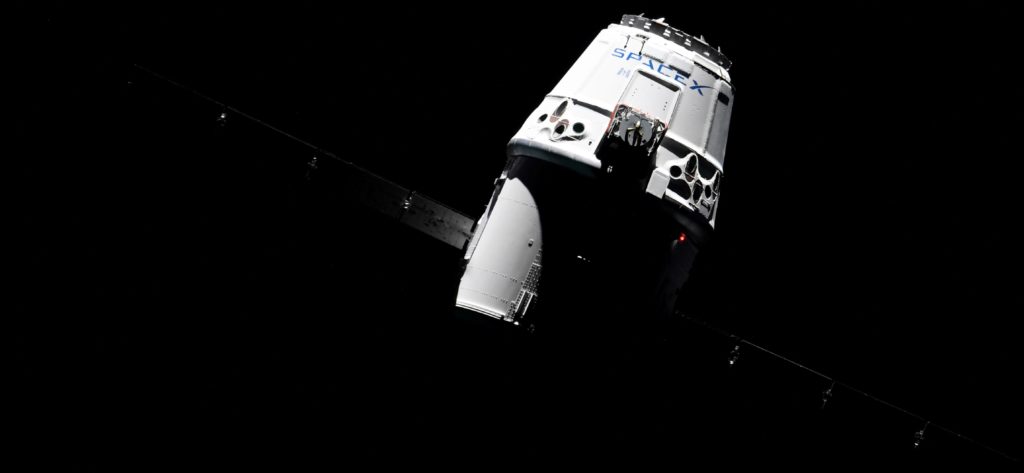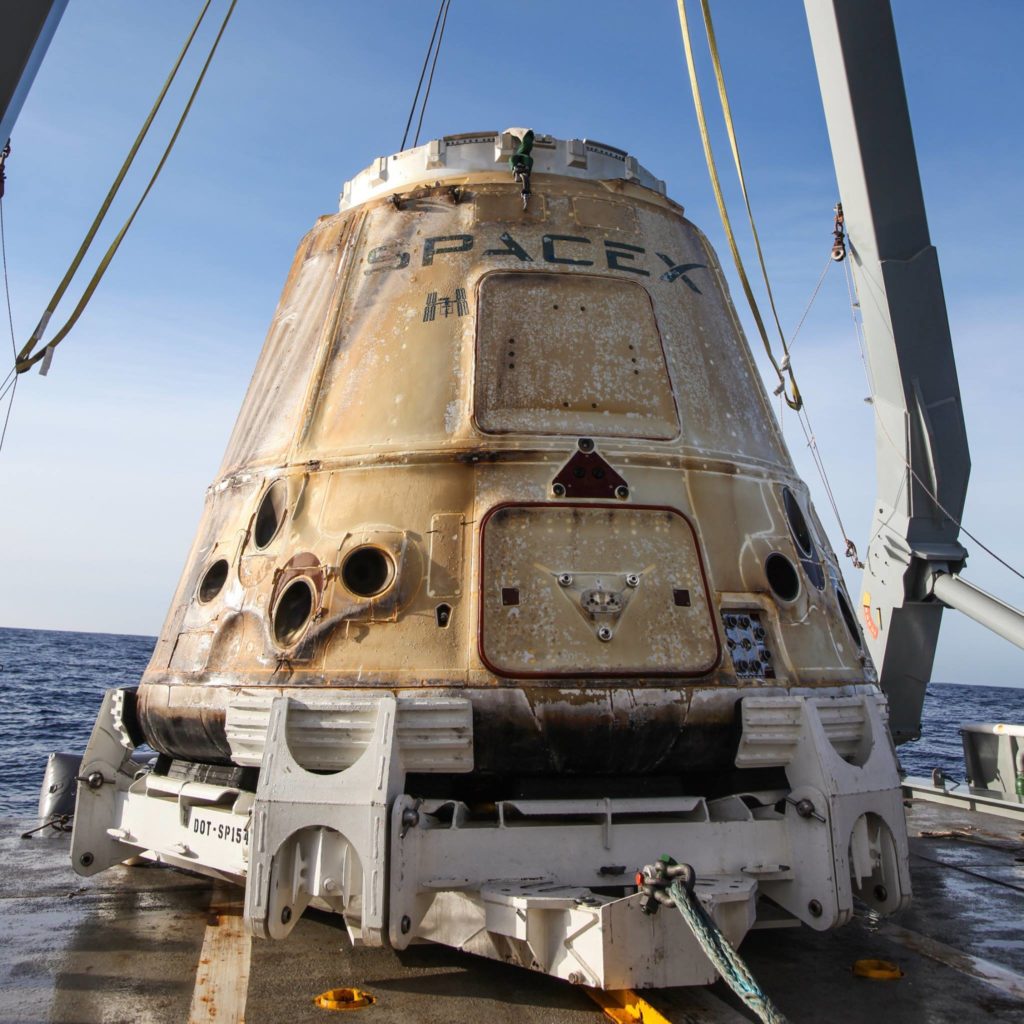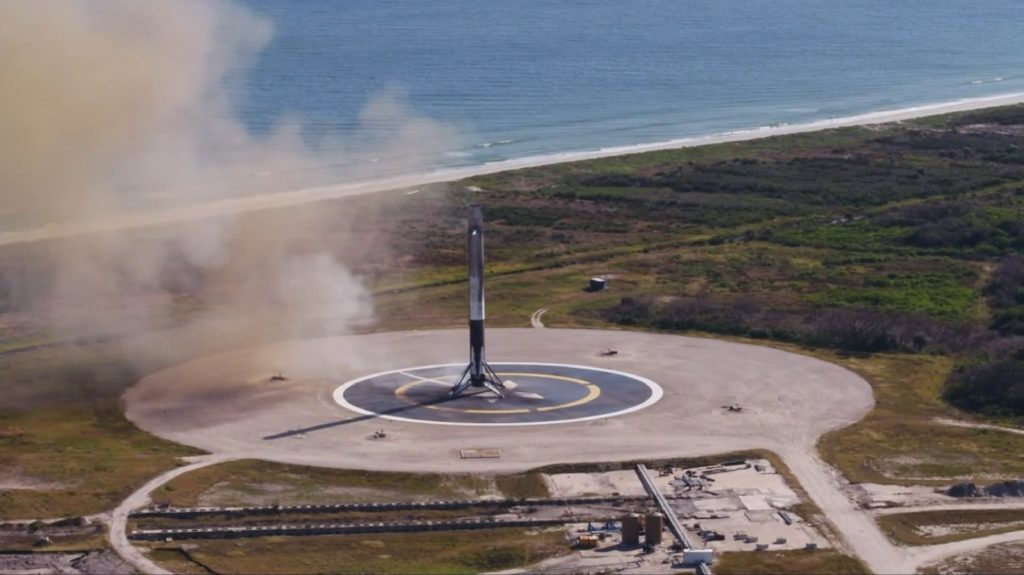

SpaceX
SpaceX’s Falcon 9 Block 5 set for first Cargo Dragon spacecraft launch
After a slight 24-hour delay at NASA’s request, SpaceX is ready to support Falcon 9 Block 5’s first launch of Cargo Dragon and the company’s 16th operational mission to resupply the International Space Station (ISS).
Carrying just under 2600 kg (5700 lbs) of science experiments, ISS hardware, and replenishable goods, CRS-16 will be the fifth time SpaceX has reused a Cargo Dragon capsule that has already been to orbit, with this particular capsule having launched in February and reentered in March of 2017.
To allow for time to replace parts of an @ISS_Research experiment, the launch of the @SpaceX cargo resupply mission to the International @Space_Station is now targeted for 1:16pm ET on Wed., Dec. 5. Details: https://t.co/EvShjud5ws pic.twitter.com/4Ug8xmfs69
— NASA (@NASA) December 4, 2018
Aside from being the first NASA-certified launch of SpaceX’s recent Block 5 upgrade to the Falcon rocket family, CRS-16 will become the first attempted East Coast land-landing of a Falcon 9 Block 5 booster, hopefully seeing B1050 safely recovered at one of the company’s two Landing Zones (LZ-1 or LZ-2) on the Florida coast. Above all else, this type of landing – known as a Return To Launch Site (RTLS) recovery – indicates that Falcon 9 is able to fly a fairly gentle launch and reentry trajectory, owing to a combination of a light payload and low-energy target orbit. As such, B1050 could be a prime candidate to break SpaceX’s launch turnaround record of 72 days – the new Block 5 booster will be subjected to one of the upgraded rocket’s gentlest landings yet.
2018 has been a landmark year for SpaceX’s program of Falcon 9 reusability, evidenced by the fact that a full 60% of the company’s 19 (20 if CRS-16 is a success) launches have flown on or with flight proven boosters. That impressive ratio is likely to only grow further as we head into 2019, to the extent that – by 2020 – the launch of a new Falcon 9 or Falcon Heavy booster could be downright rare.
On the Dragon side of things, SpaceX completed the last launch of a wholly new Cargo Dragon in August 2017, nearly 16 months ago. Since then, all Cargo Dragon launches have featured refurbished capsules, although the spacecraft’s trunk section – featuring some propellant, solar arrays, and storage space – is expended after each mission and must thus be replaced. As of now, SpaceX has only one or two flightworthy Cargo Dragons left that have completed fewer than two trips to orbit and back, meaning that a minimum of two of the company’s remaining CRS-1 missions (CRS-17 through 20) will have to be their given capsule’s third orbital launch. Thankfully, Cargo Dragon has long been designed for three launches per capsule lifetime.
The first of those third orbital reflights will almost certainly kick off sometime next year. In the meantime, SpaceX’s CRS-16 launch will be livestreamed as usual and can be viewed here, beginning later today around 10am PST (1pm EST, 18:00 UTC).
- A Cargo Dragon nears the ISS. (Oleg Artemyev)
- A reused orbital spacecraft, Cargo Dragon, back on Earth after its second successful resupply mission. (SpaceX)
- SpaceX’s LZ-1 pad just after a Falcon 9 landing. Note the black, radar-reflective paint. (SpaceX)
For prompt updates, on-the-ground perspectives, and unique glimpses of SpaceX’s rocket recovery fleet check out our brand new LaunchPad and LandingZone newsletters!

Elon Musk
Starlink passes 9 million active customers just weeks after hitting 8 million
The milestone highlights the accelerating growth of Starlink, which has now been adding over 20,000 new users per day.

SpaceX’s Starlink satellite internet service has continued its rapid global expansion, surpassing 9 million active customers just weeks after crossing the 8 million mark.
The milestone highlights the accelerating growth of Starlink, which has now been adding over 20,000 new users per day.
9 million customers
In a post on X, SpaceX stated that Starlink now serves over 9 million active users across 155 countries, territories, and markets. The company reached 8 million customers in early November, meaning it added roughly 1 million subscribers in under seven weeks, or about 21,275 new users on average per day.
“Starlink is connecting more than 9M active customers with high-speed internet across 155 countries, territories, and many other markets,” Starlink wrote in a post on its official X account. SpaceX President Gwynne Shotwell also celebrated the milestone on X. “A huge thank you to all of our customers and congrats to the Starlink team for such an incredible product,” she wrote.
That growth rate reflects both rising demand for broadband in underserved regions and Starlink’s expanding satellite constellation, which now includes more than 9,000 low-Earth-orbit satellites designed to deliver high-speed, low-latency internet worldwide.
Starlink’s momentum
Starlink’s momentum has been building up. SpaceX reported 4.6 million Starlink customers in December 2024, followed by 7 million by August 2025, and 8 million customers in November. Independent data also suggests Starlink usage is rising sharply, with Cloudflare reporting that global web traffic from Starlink users more than doubled in 2025, as noted in an Insider report.
Starlink’s momentum is increasingly tied to SpaceX’s broader financial outlook. Elon Musk has said the satellite network is “by far” the company’s largest revenue driver, and reports suggest SpaceX may be positioning itself for an initial public offering as soon as next year, with valuations estimated as high as $1.5 trillion. Musk has also suggested in the past that Starlink could have its own IPO in the future.
News
SpaceX shades airline for seeking contract with Amazon’s Starlink rival

SpaceX employees, including its CEO Elon Musk, shaded American Airlines on social media this past weekend due to the company’s reported talks with Amazon’s Starlink rival, Leo.
Starlink has been adopted by several airlines, including United Airlines, Qatar Airways, Hawaiian Airlines, WestJet, Air France, airBaltic, and others. It has gained notoriety as an extremely solid, dependable, and reliable option for airline travel, as traditional options frequently cause users to lose connection to the internet.
Many airlines have made the switch, while others continue to mull the options available to them. American Airlines is one of them.
A report from Bloomberg indicates the airline is thinking of going with a Starlink rival owned by Amazon, called Leo. It was previously referred to as Project Kuiper.
American CEO Robert Isom said (via Bloomberg):
“While there’s Starlink, there are other low-Earth-orbit satellite opportunities that we can look at. We’re making sure that American is going to have what our customers need.”
Isom also said American has been in touch with Amazon about installing Leo on its aircraft, but he would not reveal the status of any discussions with the company.
The report caught the attention of Michael Nicolls, the Vice President of Starlink Engineering at SpaceX, who said:
“Only fly on airlines with good connectivity… and only one source of good connectivity at the moment…”
CEO Elon Musk replied to Nicolls by stating that American Airlines risks losing “a lot of customers if their connectivity solution fails.”
American Airlines will lose a lot of customers if their connectivity solution fails
— Elon Musk (@elonmusk) December 14, 2025
There are over 8,000 Starlink satellites in orbit currently, offering internet coverage in over 150 countries and territories globally. SpaceX expands its array of satellites nearly every week with launches from California and Florida, aiming to offer internet access to everyone across the globe.
Currently, the company is focusing on expanding into new markets, such as Africa and Asia.
News
Tesla hints at Starlink integration with recent patent
“By employing polymer blends, some examples enable RF transmission from all the modules to satellites and other communication devices both inside and outside the vehicle.”

Tesla hinted at a potential Starlink internet terminal integration within its vehicles in a recent patent, which describes a vehicle roof assembly with integrated radio frequency (RF) transparency.
The patent, which is Pub. No U.S. 2025/0368267 describes a new vehicle roof that is made of RF-transparent polymer materials, allowing and “facilitating clear communication with external devices and satellites.”
Tesla believes that a new vehicle roof design, comprised of different materials than the standard metallic or glass elements used in cars today, would allow the company to integrate modern vehicular technologies, “particularly those requiring radio frequency transmission and reception.
Tesla has recently filed a US patent application on integrating RF transparent materials into the roof structure.
“facilitating clear communication with external devices and satellites”
Tesla fleet is getting @Starlink connectivity integration soon. LFG @Tesla @elonmusk… pic.twitter.com/bLa8YtPLd1
— Chansoo Byeon (@Chansoo) December 9, 2025
Instead of glass or metallic materials, Tesla says vehicles may benefit from high-strength polymer blends, such as Polycarbonate, Acrylonitrile Butadiene Styrene, or Acrylonitrile Styrene Acrylate.
These materials still provide ideal strength metrics for crashworthiness, stiffness for noise, vibration, and harshness control, and are compliant with head impact regulations.
They would also enable better performance with modern technologies, like internet terminals, which need an uninterrupted signal to satellites for maximum reception. Tesla writes in the patent:
“By employing polymer blends, some examples enable RF transmission from all the modules to satellites and other communication devices both inside and outside the vehicle.”

One of the challenges Tesla seems to be aware of with this type of roof design is the fact that it will still have to enable safety and keep that at the forefront of the design. As you can see in the illustration above, Tesla plans to use four layers to increase safety and rigidity, while also combating noise and vibration.
It notes in the patent that disclosed examples still meet the safety requirements outlined in the Federal Motor Vehicle Safety Standards (FMVSS).
Starlink integrated directly into Tesla vehicles would be a considerable advantage for owners. It would come with a handful of distinct advantages.
Initially, the inclusion of Starlink would completely eliminate cellular dead zones, something that is an issue, especially in rural areas. Starlink would provide connectivity in these remote regions and would ensure uninterrupted service during road trips and off-grid adventures.
It could also be a critical addition for Robotaxi, as it is crucial to have solid and reliable connectivity for remote monitoring and fleet management.
Starlink’s growing constellation, thanks to SpaceX’s routine and frequent launch schedule, will provide secure, stable, and reliable internet connectivity for Tesla vehicles.
Although many owners have already mounted Starlink Mini dishes under their glass roofs for a similar experience, it may be integrated directly into Teslas in the coming years, either as an upgrade or a standard feature.











